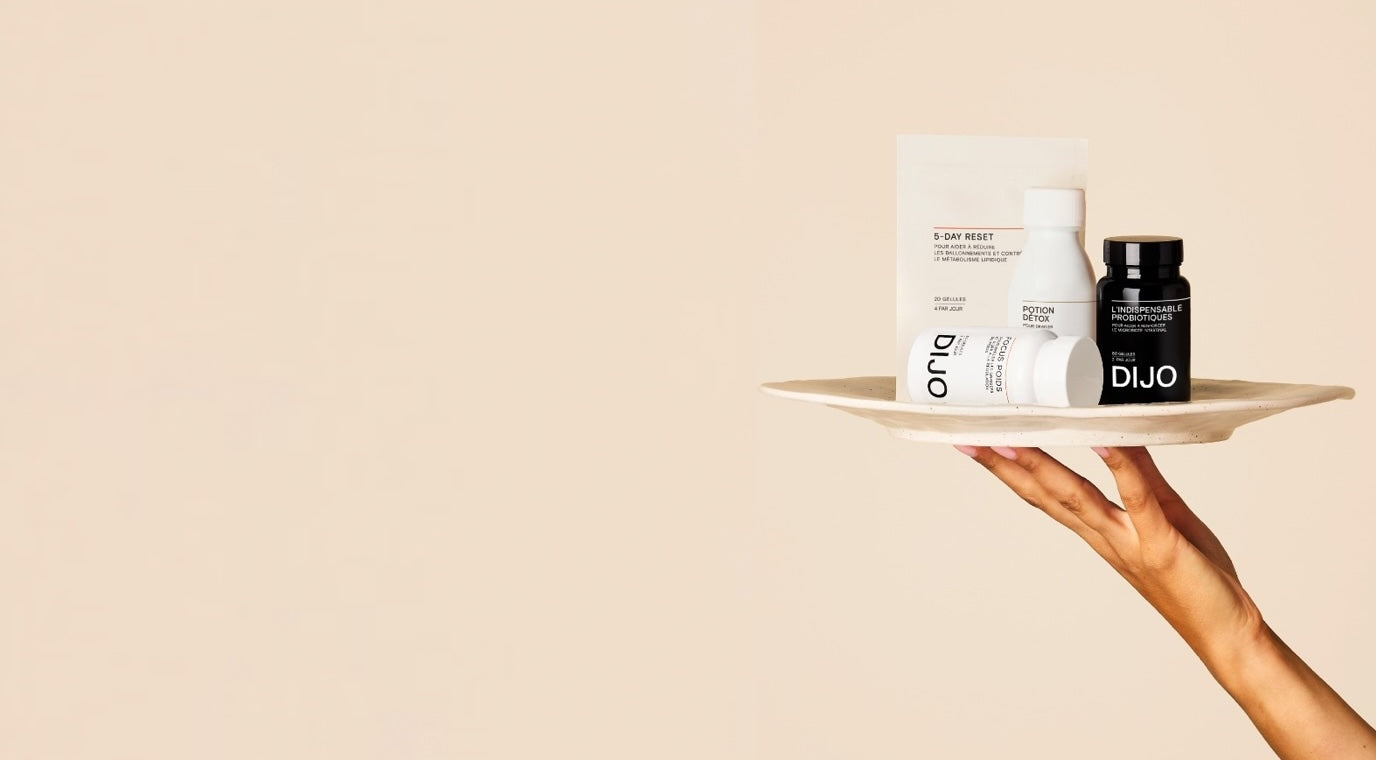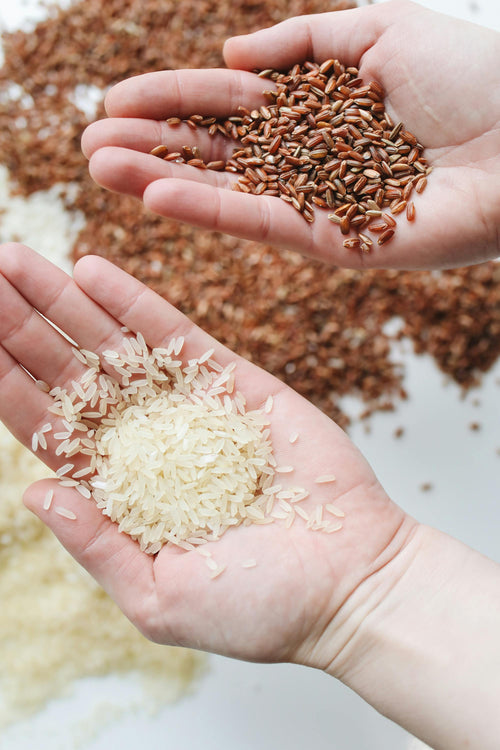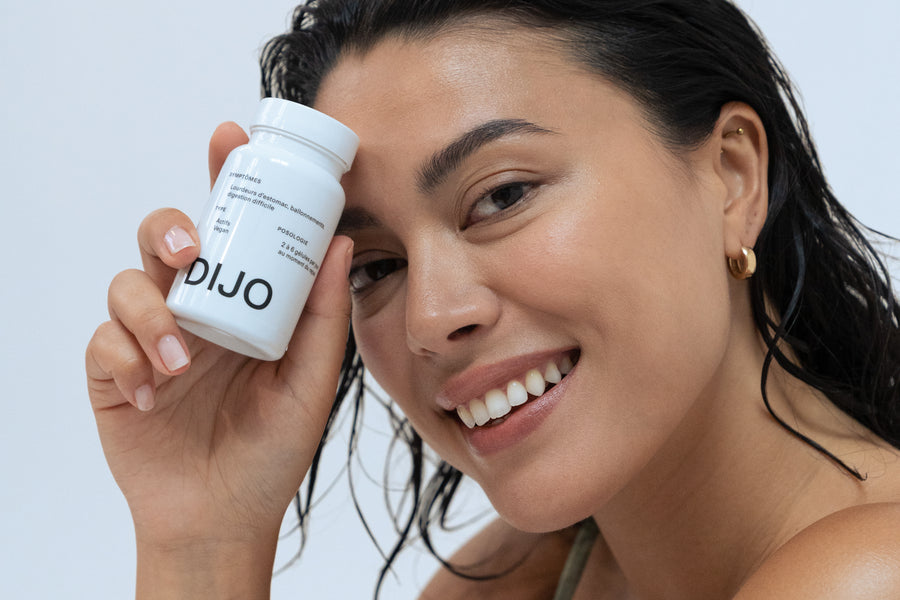What you need to remember:
- The vaginal flora is populated mainly by bacteria of the genus Lactobacillus.
- These lactobacilli help maintain an acidic pH, and a hostile environment for harmful microorganisms.
- The condition and balance of the vaginal flora depend on different factors and evolve throughout life.
- Consuming probiotics containing specific strains can help support and/or restore balance to the vaginal flora.
What is vaginal flora?
1 - Composition of the vaginal flora
The vaginal flora , or vaginal microbiota, corresponds to all the microorganisms located in the vagina in women . The vaginal flora is mainly composed of 9 strains of bacteria belonging to the lactobacilli , including Lactobacillus crispatus, Lactobacillus jensenii, Lactobacillus gasseri, Lactobacillus reuteri, Lactobacillus rhamnosus, etc.
Throughout life, each woman faces natural physiological variations, which is why each vaginal flora is different and does not harbor the same lactobacilli.
2 - Role of vaginal flora
The vaginal flora helps maintain a certain pH at the vaginal level, to effectively fight against all infections.
Indeed, Lactobacilli bacteria produce lactic acid. This helps maintain a pH below 5 and therefore an acidic environment, not conducive to the development of infections.
These good bacteria also produce substances with antibacterial action, which will further increase their protective power.
They will also protect the vaginal mucosa by creating a biofilm, a real protective barrier.
Maintaining a balanced vaginal flora of good bacteria helps combat various intimate problems such as the occurrence of mycoses, vaginosis, cystitis , etc.
3 - Factors influencing the vaginal flora
The vaginal flora changes throughout a woman's life. It depends on different factors. Among them we can cite:
- The menstrual cycle : This impacts the evolution of the pH. During the menstrual period, it is around 6, due to the higher pH of the blood, which flows into the vaginal cavity. Similarly, during the ovulatory period, the pH is higher, due to the increased production of cervical mucus.
- Intimate hygiene : Some hygiene products that are too abrasive, and certain practices such as vaginal douches can be responsible for disrupting the balance of the vaginal flora. There is no need to resort to all of this because the vagina is “self-cleaning”.
- The development of infections : The occurrence of infections at the vaginal level contributes to the imbalance of the vaginal flora by reducing the quantity of Lactobacilli. Pathogenic bacteria will thus have an easier time reproducing due to the alteration of the natural acidic environment.
- Taking antibiotics : Antibiotics will help eliminate harmful bacteria, but they will also have a negative effect on good bacteria, and thus cause a decrease in Lactobacilli.
- An unbalanced diet : A diet low in fiber and high in sugars can affect the intestinal flora , which can indirectly influence the vaginal flora.
- Chronic stress : This affects the immune system and makes the body more vulnerable to microbes and imbalances in the vaginal flora.
What roles do probiotics play for vaginal flora?
Generally speaking, probiotics help maintain a stable environment.
Probiotics in the vaginal flora produce lactic acid, which is responsible for the acidic pH of the vaginal flora.
Maintaining an acidic pH helps prevent and combat the growth of harmful bacteria and yeasts. Thus, probiotics at the level of the intimate flora reduce urinary tract infections ( cystitis ) and vaginal infections, and the development of mycoses. They prevent intimate discomfort and limit the risk of intimate itching, burning, or even unusual discharge.
These good bacteria, as in the intestinal flora, will stimulate the body's immune defenses.
Consuming probiotics will help reintroduce good bacteria into the vaginal flora after taking antibiotic treatment. Antibiotics are known to kill both the most harmful and the most beneficial bacteria.
What are the most suitable probiotics for taking care of your vaginal flora?
1 - Strains to favor, optimal concentration and diversity of strains
The most beneficial strains for the vaginal flora remain those which are usually part of it, such as the strains L. gasseri, L. crispatus, L. rhamnosus.
Generally, for effective probiotics, a concentration of 1 billion to 10 billion CFU (Colony Forming Units) per dose is usually recommended. This amount ensures sufficient colonization to restore the balance of the vaginal flora.
Each woman's vaginal flora is unique, and so are the different strains of bacteria found there in one woman and another.
Each strain of lactobacilli has specific characteristics. Thus, providing a combination of several of these strains allows you to benefit from more complete advantages.
The more diverse the vaginal microbiota, the more able it will be to face and combat any unpleasantness.
2 - Sources of probiotics for vaginal flora
#1 - Probiotics in food
Probiotics are found naturally in fermented foods .
The main foods that contain it are:
- Yogurts , some of which contain added probiotics, in addition to the bacteria commonly used for fermenting milk
- Lacto-fermented vegetables and legumes (cabbage, beetroot, sauerkraut, carrots, miso made from soy)
- Pickled foods (pickles, olives, kimchi, etc.)
- Lacto-fermented drinks (Kefir, Kombucha)
#2 - Probiotics as a supplement
Probiotic supplementation remains a valuable ally in restoring an unbalanced vaginal flora that is low in lactobacilli. There are different types, with different methods of administration: orally, gels, vaginal capsules, ovules, soaked tampons, etc. Probiotics taken orally migrate into the intestinal flora and then transit to the vaginal flora thanks to a biofilm formed by bacteria in the perineum.
At DIJO, we have created Flore intime probiotics , a product containing 3 strains of probiotics, dosed at 10 billion bacteria, and specifically selected to rebalance your vaginal flora. For long-lasting effects and general well-being, we recommend taking it as a 2 to 3 month treatment, renewable with each new season or when you feel the need.
Sources:
[1] Witkin, SS, & Linhares, IM (2017). Why do lactobacilli dominate the human vaginal microbiota? BJOG: An International Journal of Obstetrics & Gynecology , 124 (4), 606-611.
[2] Bohbot, J.M. (2008). Vaginal discharge. Pelvi-perineology , 3 , 19-24.
[3] Cribby, S., Taylor, M., & Reid, G. (2008). Vaginal microbiota and the use of probiotics. Interdisciplinary perspectives on infectious diseases , 2008 (1), 256490.
[4] Moosa, Y., Kwon, D., De Oliveira, T., & Wong, EB (2020). Determinants of vaginal microbiota composition. Frontiers in cellular and infection microbiology , 10 , 467.
[5] Stapleton, A.E. (2016). The vaginal microbiota and urinary tract infection. Microbiology spectrum , 4 (6), 10-1128.






















